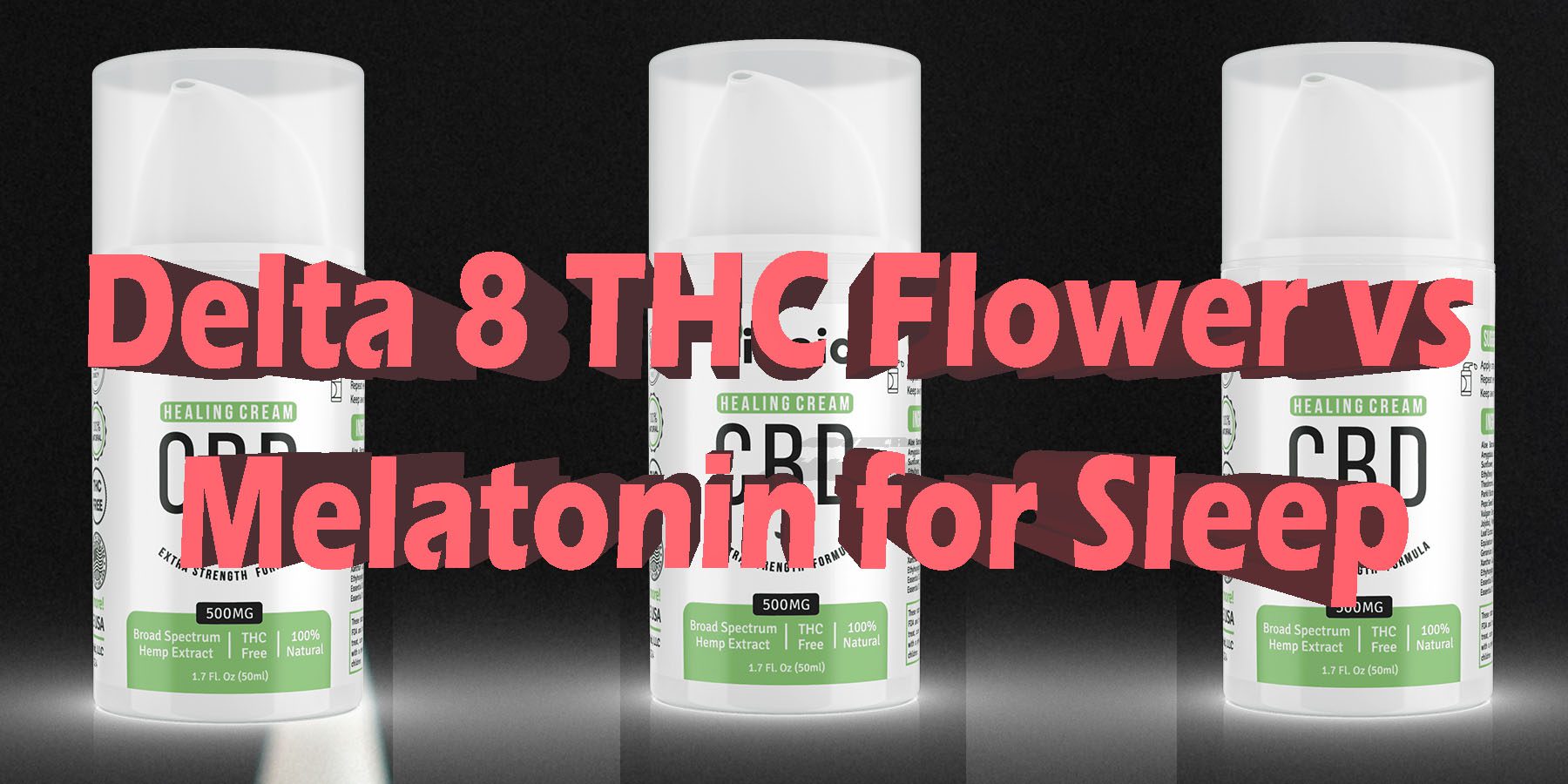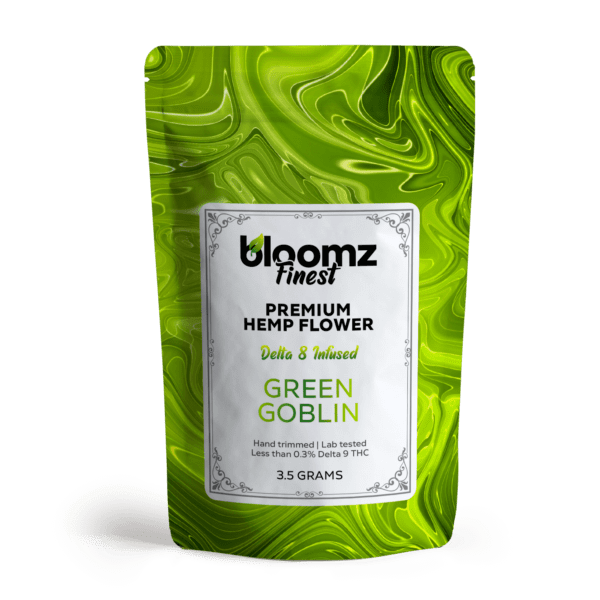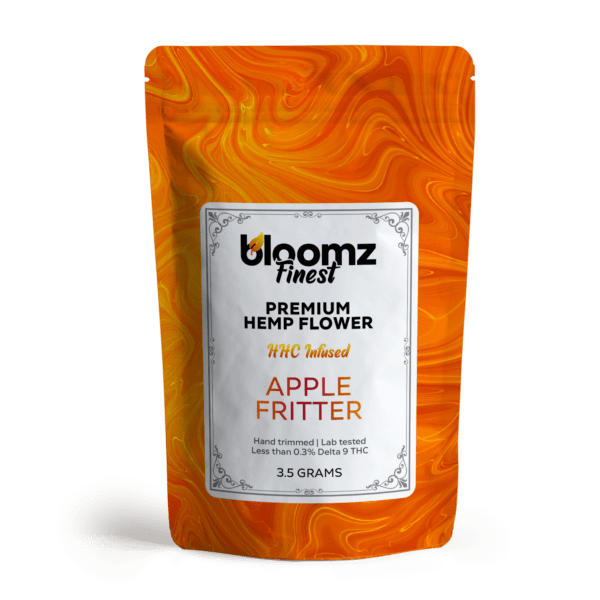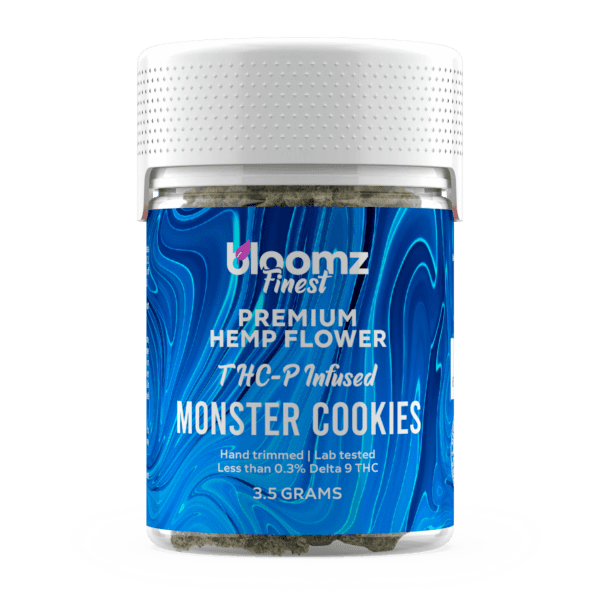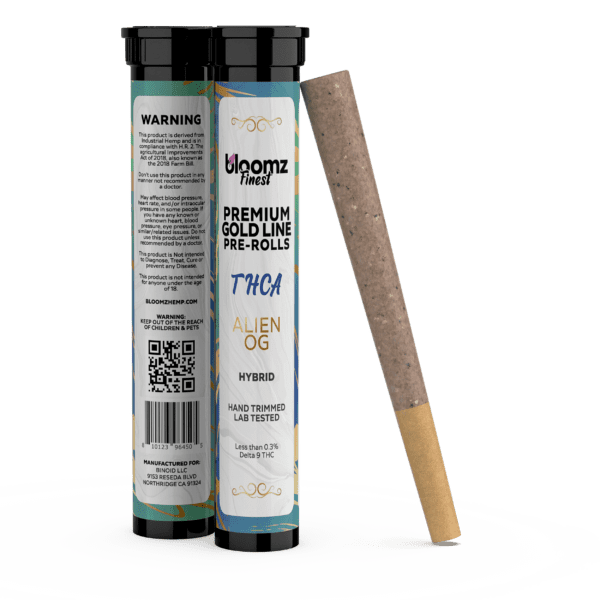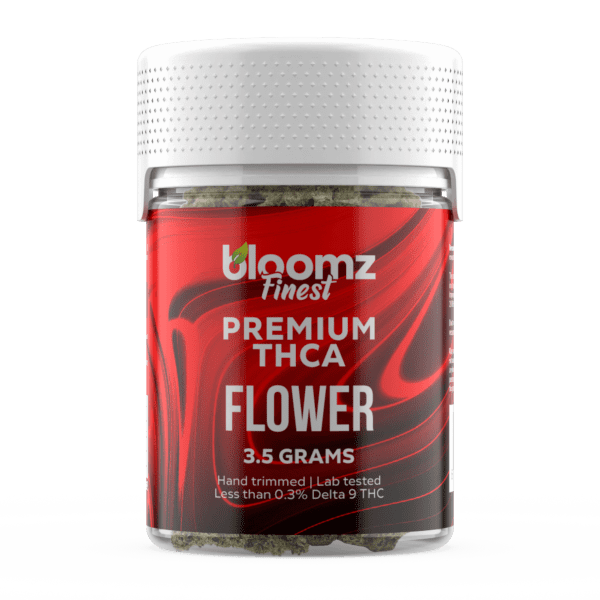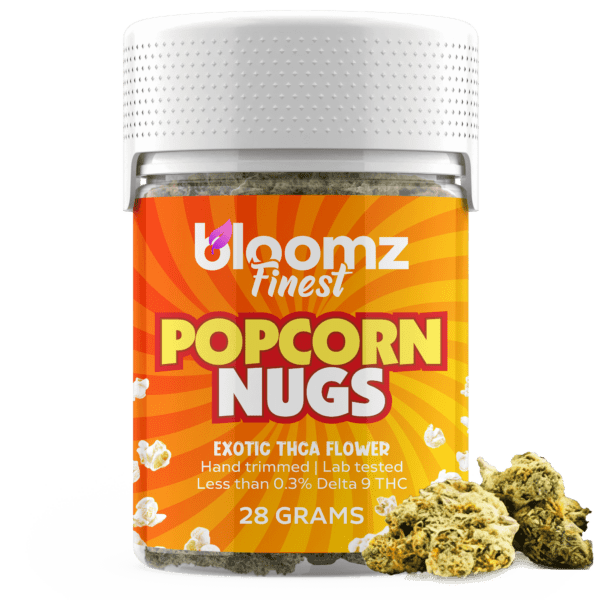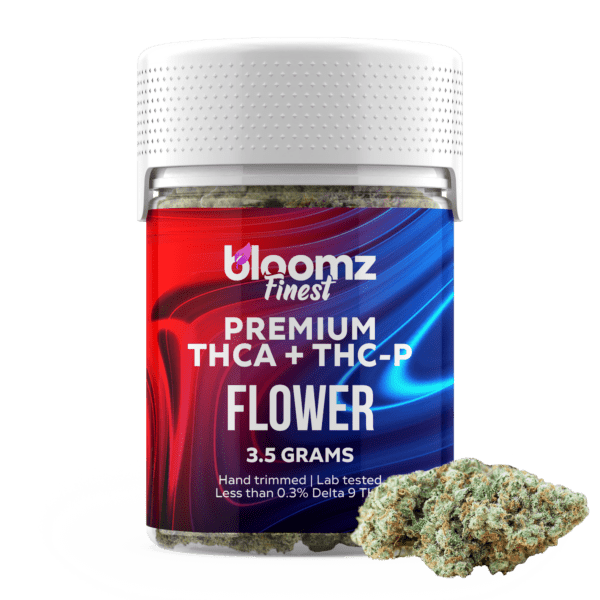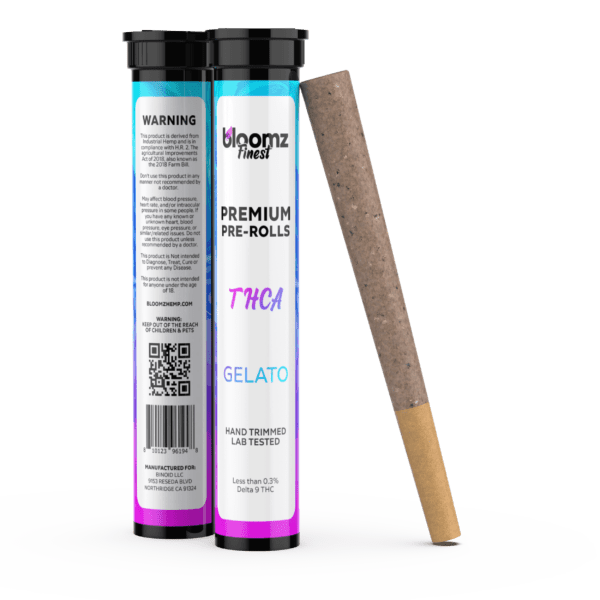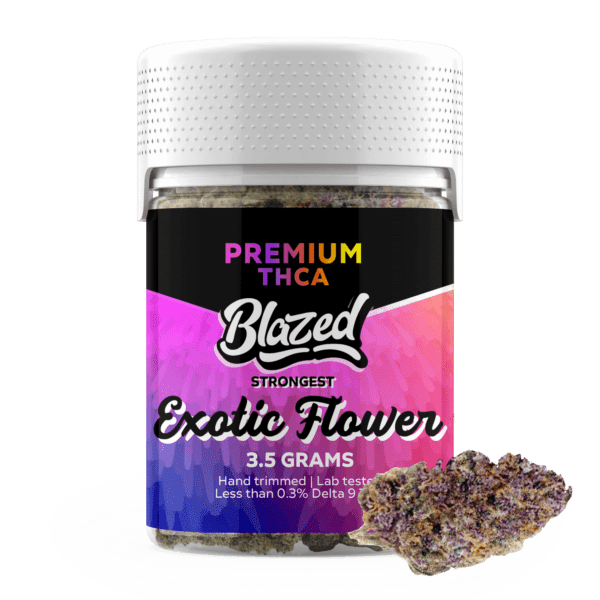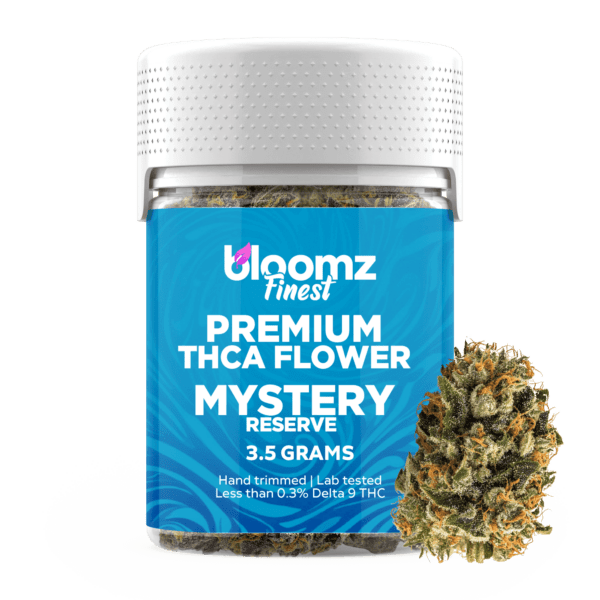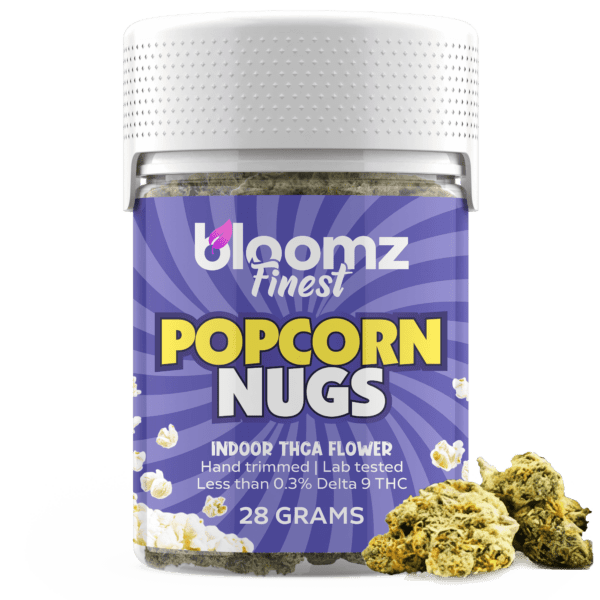As the relentless pace of the modern world finally begins to slow with the setting sun, a collective human desire emerges: the quest for a peaceful and restorative evening. The transition from the day’s obligations to a state of personal tranquility can sometimes feel like navigating a complex landscape, with countless paths promising a route to relaxation. In this search, many people explore different options to help them unwind and prepare for a night of restful sleep. Two prominent names that frequently arise in these discussions are Delta 8 THC flower and melatonin, each offering a fundamentally different approach to achieving a serene state of being.
One is a botanical product derived from the hemp plant, offering a gentle psychoactive journey, while the other is a supplement designed to support the body’s own natural sleep-signaling mechanisms. Understanding the distinct nature of these two options is the first step toward making a choice that truly aligns with one’s personal evening wellness goals.
TO BUY DELTA 8 THC FLOWER CLICK HERE
Recommended products
Why It’s Important to Breakdown the Matchup of Delta 8 THC Flower vs. Melatonin
In today’s crowded wellness marketplace, where countless products vie for our attention, achieving clarity is more important than ever. The comparison between Delta 8 THC Flower and melatonin is a vital exercise because it juxtaposes two entirely different philosophies for encouraging a state of evening calm. Delta 8 THC flower offers an experience—a mild, blissful journey that alters perception and helps the mind detach from the day’s mental clutter.
Melatonin, in contrast, offers a biological signal—a targeted supplement that works in harmony with the body’s internal clock to indicate that it’s time for rest. A detailed breakdown of this matchup is crucial because it empowers individuals to make a conscious, informed decision based on their desired outcome, rather than on vague marketing or anecdotal claims. By meticulously examining their origins, effects, legality, and methods of use, we can draw a clear map of this complex territory.
Choosing a tool for your evening wind-down routine is a deeply personal affair, influenced by individual body chemistry, lifestyle, and what one hopes to achieve. Some may be searching for a profound sense of physical and mental relaxation that creates a distinct separation from the daytime mindset, while others may simply want a gentle, non-intoxicating nudge toward drowsiness. A thorough exploration of Delta 8 THC flower versus melatonin addresses this entire spectrum of needs.
It illuminates the critical difference between a psychoactive experience and a non-psychoactive hormonal process. Furthermore, this analysis delves into the practical aspects of consumption—the ritual of preparing and using flower versus the simple convenience of a capsule or gummy. This breakdown is not about crowning a champion, but about providing a comprehensive framework of knowledge so that every person can confidently choose the path that best suits their unique rhythm for achieving a state of chilled-out bliss.
Contender #1: Delta 8 THC Flower
Our first contender emerges from the ever-evolving world of hemp-derived cannabinoids, offering a unique and nuanced experience that has captured the interest of many. Delta 8 THC flower stands as a testament to modern cannabis science, a product that provides a bridge between the non-psychoactive properties of CBD and the potent effects of Delta 9 THC. It is cherished by those who seek a gentle euphoria and a clear-headed sense of relaxation without the overwhelming intensity that can sometimes accompany its more famous cannabinoid cousin. As we delve into the specifics of Delta 8 THC flower, we uncover a story of molecular chemistry, innovative production techniques, and a spectrum of calming effects that can soothe the mind and body.
Delta-8-tetrahydrocannabinol, commonly known as Delta 8 THC, is a naturally occurring cannabinoid found in the cannabis plant, though typically only in very small, trace amounts. It is an isomer of Delta 9 THC, which means they share the same chemical formula but have a slightly different molecular structure. The key difference between the two lies in the placement of a specific double bond in their carbon chain; in Delta 8 THC, this bond is on the eighth carbon atom, while in Delta 9 THC, it is on the ninth. This subtle shift in structure has a significant impact on how the molecule interacts with the body’s endocannabinoid system, particularly the CB1 receptors in the brain. While Delta 8 THC still binds to these receptors and produces a psychoactive effect, its binding affinity is lower than that of Delta 9 THC.
This results in a psychoactive experience that is reported by most users to be significantly less potent—often described as being about half as strong—and characterized by a clearer, more functional high with less paranoia or unease. Because it occurs in such small quantities naturally, the Delta 8 THC found in consumer products is not typically extracted directly from the plant. Instead, it is most often created in a laboratory setting through a chemical process that converts more abundant cannabinoids, like CBD, into Delta 8 THC.
This is where a critical distinction must be made. Unlike a traditional cannabis flower that grows naturally rich in a specific cannabinoid, there is currently no known cannabis strain that naturally produces high concentrations of Delta 8 THC. Therefore, “Delta 8 THC flower” is a manufactured product. The process begins with a base of high-quality, legally grown hemp flower, which is typically rich in CBD (Cannabidiol) or another non-psychoactive cannabinoid like CBG (Cannabigerol).
This hemp flower provides the foundational structure, terpene profile, and overall “flower” experience. The Delta 8 THC itself, in the form of a thick, potent distillate, is then added to this base flower through one of several infusion methods. The quality of the final product is therefore dependent on two key factors: the quality of the starting hemp flower and the purity and application method of the Delta 8 THC distillate.
Recommended products
You see, the production of Delta 8 THC flower is a multi-stage process that combines agriculture with laboratory chemistry and specialized manufacturing techniques. The goal: create a final product that is potent, consistent, and safe for consumption:
-
Hemp Flower Cultivation: The foundation of any good Delta 8 flower is premium hemp flower. Expert cultivators grow specific strains of CBD or CBG hemp, often indoors or in light-assisted greenhouses, to produce dense, aromatic, and trichome-rich buds. These strains are chosen for their desirable terpene profiles (which dictate the aroma and flavor, such as citrus, pine, or berry) and their attractive appearance. After harvesting, this flower is carefully dried and cured to preserve its quality.
-
Creation of Delta 8 THC Distillate: This is the high-tech part of the process. In a laboratory, chemists take CBD isolate or distillate, which has been extracted from large quantities of hemp biomass. Using a process called isomerization, they apply specific acids and catalysts in a controlled reaction to rearrange the molecules of CBD into Delta 8 THC. After the reaction, the resulting crude oil is extensively refined and purified through distillation to create a clear, thick, and highly potent Delta 8 THC distillate, free of any residual solvents or reactants.
-
The Infusion Process: This is the final manufacturing step where the distillate is applied to the raw hemp flower. There are several methods used, with varying levels of quality:
-
Spraying: The most common and cost-effective method involves lightly spraying the hemp buds with a warmed, slightly diluted Delta 8 THC distillate. While efficient, this method can sometimes lead to an uneven coating, with some parts of the bud being more potent than others, and can leave the flower feeling slightly damp or sticky if not done correctly.
-
Cryo-Infusion: A more advanced method involves freezing the distillate and hemp flower with liquid nitrogen and then tumbling them together. This process is believed to help the distillate adhere more evenly to the flower’s surface and better preserve the delicate trichomes and terpenes of the base flower.
-
Solvent-Based Infusion: Some manufacturers may dilute the distillate in a solvent (like ethanol), soak or spray the flower, and then allow the solvent to fully evaporate. This can result in a deeper, more even infusion, but it is absolutely critical that the final product is tested to ensure there are no residual solvents remaining.
-
-
Final Testing and Curing: After the infusion process, the flower may undergo a final short curing period to ensure it is properly dried. Reputable brands will then send a sample of the finished batch to a third-party lab for a full panel of tests. This confirms the Delta 8 THC potency, verifies that the Delta 9 THC level is still within the legal limit, and screens for any harmful contaminants, including pesticides, heavy metals, and residual solvents from the infusion process.
Just like the broader cannabis market, the world of Delta 8 THC flower is segmented into various categories that reflect differences in quality, appearance, and preparation. These distinctions primarily relate to the quality of the base hemp flower used in the manufacturing process and any additional enhancements that are applied. Understanding these different types allows consumers to select a product that matches their preferences for quality, convenience, and potency. From standard indoor-grown buds to ultra-potent infused creations, each category offers a unique take on the Delta 8 THC experience:
-
Indoor Delta 8 Flower: This category represents the premium standard for Delta 8 flower. The process starts with top-shelf, indoor-grown CBD or CBG hemp. Indoor cultivation allows for meticulous control over the growing environment, resulting in a base flower that is visually stunning, with dense buds, a heavy trichome coating, and a potent, well-preserved terpene profile. When this A-grade flower is infused with high-purity Delta 8 distillate, the result is a product that offers the best of both worlds: the robust flavor and aroma of a craft cannabis strain and the clear, mild high of Delta 8 THC. Indoor Delta 8 flower is sought after by those who prioritize a rich sensory experience and are willing to pay a premium for superior quality.
-
Outdoor Delta 8 Flower: This is a more budget-friendly option that uses outdoor-grown CBD or CBG hemp as its base. While outdoor cultivation is more sustainable and cost-effective, the resulting flower can be less aesthetically perfect and consistent than indoor-grown varieties. The buds might be less dense and the terpene profile more subdued. However, when infused with the same high-quality Delta 8 distillate, it still delivers the desired psychoactive effects. Outdoor Delta 8 flower is an excellent choice for consumers who are primarily focused on the effects of the Delta 8 THC and are looking for a more affordable option for regular use.
-
Delta 8 Smalls: Similar to other cannabis products, “smalls” refer to the smaller, popcorn-sized buds from the hemp plant. These buds come from the same high-quality indoor or outdoor plants as the larger nugs but are separated out due to their smaller size. After being sorted, they are infused with Delta 8 THC distillate in the same manner. Delta 8 smalls offer a fantastic value proposition, providing the same potency and flavor as their larger counterparts but at a significantly lower price point, making them a very popular choice for budget-conscious consumers.
-
Delta 8 Nugs: This refers to the standard, well-formed, medium-to-large-sized buds that serve as the flagship product for most brands. These A-grade hemp buds are carefully selected for their good structure and visual appeal before being infused with Delta 8 distillate. When you purchase a standard container of Delta 8 flower, you are typically getting these classic nugs. They provide the full tactile and visual experience of handling premium flower, making them the most common choice for the majority of users.
-
Delta 8 Moonrocks: For those seeking the highest level of potency, Delta 8 Moonrocks are the ultimate infused product. The creation is a multi-step process. It starts with a solid nug of hemp flower. This nug is then coated in a thick, sticky layer of potent Delta 8 THC distillate. Finally, the distillate-coated bud is rolled in a generous amount of kief, which is the collected trichomes (resin glands) from the hemp plant, rich in CBD and terpenes. The result is a single, incredibly dense and heavy nugget that is packed with cannabinoids. Delta 8 Moonrocks are extremely potent and are intended only for experienced users with a high tolerance.
-
Delta 8 Pre-Rolls, Blunts & Joints: Offering maximum convenience, pre-rolled products eliminate the need for any preparation or paraphernalia. A Delta 8 pre-roll or joint consists of ground Delta 8 flower packed into a rolling paper, usually with a filter tip. A blunt is a larger version, rolled in a hemp wrap, which can add its own flavor to the experience. These products are sold as ready-to-use singles or in multi-packs, making them perfect for trying a new strain, for social settings, or for anyone who prefers a simple grab-and-go option.
When you see a strain name like “Sour Diesel” or “Granddaddy Purple” on a package of Delta 8 THC flower, it’s important to understand what that name is referring to. Since all Delta 8 flower starts as CBD or CBG hemp, the strain name denotes the genetic cultivar of the base flower before any infusion takes place. This means the name corresponds to the flower’s inherent terpene profile, which dictates its aroma, flavor, and is believed to influence the subtle nuances of the overall experience. The effects of the Delta 8 THC are then layered on top of this foundational profile.
Therefore, choosing a strain is about selecting the aromatic and flavor experience you prefer and the type of subtle influence you want the terpenes to have on the Delta 8 THC high. These traditional classifications below are used to give consumers a general guide:
-
Indica: For Delta 8 flower, an “Indica” strain means the base is an Indica-dominant hemp variety. These strains are known for producing terpene profiles rich in compounds like myrcene, which is associated with earthy, musky, and fruity aromas. The experience of an Indica Delta 8 flower is typically aimed at deep relaxation and a soothing body sensation. The calming properties of the Indica terpenes are thought to synergize with the relaxing body high of the Delta 8 THC, making these strains a very popular choice for evening use when the goal is to unwind, decompress, and prepare for a restful night.
-
Sativa: A “Sativa” Delta 8 flower uses a Sativa-dominant hemp strain as its foundation. These hemp strains are cultivated to produce terpenes like limonene (citrusy) and pinene (pine-like), which are associated with more uplifting and energizing aromas. When combined with the mild euphoria of Delta 8 THC, Sativa strains are intended to produce a more cerebral, uplifting, and active experience. Users often choose Sativa Delta 8 strains for daytime activities, social gatherings, or creative pursuits, as they tend to be less sedating and more mentally stimulating than their Indica counterparts.
-
Hybrid: Hybrid Delta 8 flower uses a base hemp strain that has been crossbred from both Indica and Sativa lineages. This is the largest and most diverse category, offering a wide spectrum of potential experiences. A hybrid strain might be bred to offer the relaxing body effects of an Indica with the mental clarity and gentle euphoria of a Sativa, providing what many consider to be a “best of both worlds” experience. They can be Indica-dominant, Sativa-dominant, or a balanced 50/50 mix, providing a vast array of nuanced options for consumers to explore and find the perfect profile to suit their specific preferences.
The legal status of Delta 8 THC flower is one of the most complex and contentious topics in the entire cannabinoid industry. Its legality, much like that of other hemp-derived products, stems from the 2018 Agriculture Improvement Act (the Farm Bill). This bill federally legalized hemp by defining it as any cannabis plant containing no more than 0.3% Delta 9 THC by dry weight. Since Delta 8 THC is not Delta 9 THC, products containing it were initially considered legal under this definition, as long as the final product maintained the compliant level of Delta 9 THC. This legal interpretation is what allowed the Delta 8 market to explode in popularity across the country.
However, the situation is far from simple. The Drug Enforcement Administration (DEA) later issued an Interim Final Rule (IFR) which stated that “all synthetically derived tetrahydrocannabinols remain schedule I controlled substances.” This created a massive legal debate, as most Delta 8 THC is created by chemically converting CBD, a process that the DEA could potentially define as “synthetic.” While the industry argues that since the source material (CBD) is from a natural plant, Delta 8 is hemp-derived and not truly synthetic, the ambiguity remains a significant point of contention.
As a result of this federal gray area and the psychoactive nature of Delta 8 THC, many individual states have taken matters into their own hands. A significant number of states have explicitly banned or heavily restricted the sale and possession of Delta 8 THC products, regardless of the 2018 Farm Bill. The legal landscape is a constantly shifting patchwork of different state laws, with some states allowing it, some banning it, and others having unclear regulations. Therefore, it is absolutely crucial for any consumer to thoroughly research and understand the specific laws regarding Delta 8 THC in their own state and local jurisdiction before making a purchase. The legality of Delta 8 is highly volatile and varies dramatically from one place to another.
Now, individuals are drawn to Delta 8 THC flower for a variety of reasons, most of which center on its reputation as a milder, more manageable alternative to traditional Delta 9 THC. The primary purpose is to experience a gentle psychoactive effect that can help facilitate relaxation and a shift in perspective, without the potential for the overwhelming intensity or unease that some people experience with more potent cannabis products. It occupies a unique middle ground, offering more of a noticeable “high” than CBD but less of an intoxicating punch than Delta 9 THC.
Recommended products
This makes it an appealing choice for both newcomers to the world of psychoactive cannabinoids and experienced users who are looking for a more functional and less sedative option for their wind-down routine. The methods of consumption are identical to other forms of cannabis flower, allowing users to choose a method that aligns with their desired onset speed and experience:
-
Vaping (using a portable or desktop vaporizer): Vaping is a highly popular method for consuming Delta 8 flower because it offers a clean, flavorful, and efficient experience. Vaporizers heat the flower to a precise temperature, vaporizing the infused Delta 8 THC and the terpenes from the base flower without causing combustion. This allows the user to taste the full, nuanced flavor profile of the hemp strain. Because it avoids burning plant matter, it is generally considered a less harsh method of inhalation than smoking. The effects are felt very quickly, usually within minutes, which allows for easy dose titration to find the perfect level of gentle euphoria.
-
Smoking: This is the most traditional and straightforward method. It involves grinding the Delta 8 flower and smoking it in a joint, pipe, or bong. The heat from the flame instantly vaporizes the Delta 8 THC for inhalation, leading to a rapid onset of effects. The ritual of grinding, packing, or rolling can be a relaxing and enjoyable part of the process for many users. While effective and fast-acting, this method does involve inhaling smoke, which is a consideration for health-conscious individuals.
-
Cooking/Baking: Delta 8 flower can be used to create edibles, but it requires an extra layer of consideration. Because the Delta 8 THC is already active and infused onto the flower, the initial decarboxylation step needed for THCA flower is not strictly necessary. However, gently heating the flower while infusing it into a fat like butter or oil can help it to bind more effectively and create a more evenly distributed product. When Delta 8 THC is ingested as an edible, it is processed by the liver, which can create a more potent and much longer-lasting effect than when inhaled. The onset is slow (30-90 minutes), but the experience can last for many hours, making it a good choice for those seeking a prolonged period of deep relaxation.
Finally, the overall experience of using Delta 8 THC flower is most frequently described as a pleasant and manageable psychoactive “high”. The effects are noticeably milder than those of Delta 9 THC, creating a state of being that many users find to be uniquely functional and clear-headed.
A common report is that it provides a significant sense of calm and a pleasant body sensation without the intense cerebral “fogginess” or potential for paranoia that can sometimes accompany more potent forms of cannabis. The high is often characterized by a gentle uplift in mood, a feeling of blissful contentment, and a subtle shift in perception that can make activities like listening to music or watching a movie more engaging and enjoyable.
Physically, Delta 8 THC is renowned for its relaxing properties. Users often report a soothing, warm sensation that spreads through the body, helping to ease feelings of physical tension. This body-centric effect is a key reason why it is so popular for evening use. It can help create a distinct feeling of being chilled out and at ease, making it easier to transition from an active, “go-mode” mindset to a more relaxed, “rest-mode” state.
The combination of a clear, non-intrusive mental ‘high’ with a noticeable physical relaxation makes it a go-to choice for those who want to unwind and decompress without feeling overly sedated or mentally incapacitated. It offers a gentle journey into a state of serene repose, making it a fitting companion for a quiet evening at home.
Pros & Cons
Like any product designed to alter one’s state of being, Delta 8 THC flower comes with a distinct set of advantages and potential drawbacks. A balanced assessment of these pros and cons is essential for anyone considering incorporating it into their evening routine, as it allows for a decision based on a complete and realistic picture of the experience.
Pros:
-
Milder, Clear-Headed High: The most celebrated benefit of Delta 8 THC is its lower psychotropic potency compared to Delta 9 THC. This results in a high that is often described as being much clearer, more functional, and less likely to induce feelings of unease or paranoia. This makes it an excellent introductory product for those curious about THC’s effects or for experienced users seeking a more manageable and less overwhelming experience.
-
Strong Body Relaxation: Users consistently report that Delta 8 THC provides a profound and noticeable sense of physical relaxation. This relaxing body high is a key feature, making it highly effective for helping individuals feel chilled out and at ease after a long day. This can be particularly appealing for those who want to unwind physically as well as mentally.
-
Federal Legality (in Many States): Thanks to the 2018 Farm Bill, Delta 8 THC exists in a state of federal legality that makes it accessible in many states where Delta 9 THC is illegal. This allows a large portion of the adult population to legally purchase and consume a psychoactive cannabis product, often online with convenient shipping directly to their homes.
-
Variety of Terpene Profiles: Because Delta 8 flower uses high-quality CBD or CBG hemp as its base, consumers can still enjoy a wide variety of strain-specific terpene profiles. This allows users to choose products with the aromas and flavors they prefer—from citrusy and uplifting to earthy and calming—adding a layer of customization and sensory enjoyment to the experience.
-
Rapid Onset with Inhalation: When smoked or vaped, the effects of Delta 8 THC flower are felt within minutes. This rapid onset provides almost immediate feedback, which is highly beneficial for dose control. Users can take a single puff, wait a few moments to assess the effects, and then decide if they want more, minimizing the risk of accidentally over-consuming.
-
Less Reported Mental Fogginess: A common accolade for Delta 8 THC is that it allows the user to feel relaxed and euphoric without the significant cognitive “fog” or impairment to short-term memory that can be associated with Delta 9 THC. This allows many users to remain more present and engaged in activities like conversation or watching a film.
-
Convenient and Familiar Form Factor: Delta 8 THC is available in the traditional flower form that is familiar and comfortable for many cannabis users. The availability of pre-rolls and joints adds an extra layer of convenience, making it easy to consume without the need for specialized equipment like grinders or pipes.
-
Generally More Affordable: Due to its legal status and the efficiency of converting it from abundant CBD, Delta 8 THC products, including flower, are often more affordable than state-licensed Delta 9 THC products in legal marijuana markets. This accessibility makes it a more viable option for regular use for many people.
-
A “Middle Ground” Option: Delta 8 THC occupies a unique and desirable space between non-psychoactive CBD and potent Delta 9 THC. It provides a noticeable and enjoyable psychoactive effect that is stronger than what CBD can offer, but gentler than Delta 9, making it the perfect “middle ground” for a large segment of consumers.
-
Can Still Induce Euphoria and Bliss: Despite its milder nature, Delta 8 THC is still very capable of producing a significant sense of euphoria, happiness, and bliss. It can effectively elevate mood and help users detach from the mundane concerns of the day, offering a genuine and enjoyable psychoactive journey that is both pleasant and restorative.
Cons:
-
It Is a Manufactured, Not Natural, Product: A significant drawback is that high-potency Delta 8 flower does not grow naturally; it must be manufactured by infusing or coating hemp flower with a lab-created distillate. This process introduces more variables and potential points of failure compared to a naturally grown product, and it may be unappealing to purists who prefer their botanicals in an unaltered state.
-
Inconsistent Quality and Potency: The quality of Delta 8 flower can vary dramatically between brands. The potency and user experience depend heavily on the quality of the base hemp flower, the purity of the distillate, and the evenness of the infusion process. A poorly made product can have “hot spots” of potency or a harsh taste, making it crucial to buy from reputable, lab-tested sources.
-
Complex and Unstable Legal Status: The legality of Delta 8 THC is a volatile and confusing issue. While federally permissible under the Farm Bill, the DEA’s stance on “synthetically derived” cannabinoids creates a gray area, and many states have moved to ban it outright. Consumers run the risk of purchasing a product that may be or could become illegal in their location, creating significant legal uncertainty.
-
Lack of Scientific Research: As a relatively new cannabinoid to the mainstream market, Delta 8 THC has significantly less scientific and clinical research behind it compared to Delta 9 THC or CBD. The long-term effects of regular consumption are not yet well understood, which is an important consideration for anyone thinking about making it a regular part of their routine.
Contender #2: Melatonin
Our second contender enters the arena not from the soil of a farm, but from the intricate pathways of our own biology. Melatonin is a substance that is intimately familiar to the human body, a natural messenger that plays a crucial role in orchestrating one of our most fundamental rhythms. Unlike THCA flower, which introduces an external botanical compound to create an experience, melatonin supplements are designed to augment a pre-existing internal process.
The story of melatonin is one of circadian rhythms, pineal glands, and the delicate dance between light and darkness that has governed life for eons. As a supplement, it has become one of the most widely recognized and accessible tools for people looking to support their natural sleep-wake cycle.
Essentially, melatonin is a hormone that is naturally produced by the pineal gland, a tiny, pea-sized gland located deep within the center of the brain. Its primary function is to regulate the body’s sleep-wake cycle, also known as the circadian rhythm. The production and release of melatonin are intricately linked to light exposure. When the eyes detect darkness, the suprachiasmatic nucleus (SCN) in the hypothalamus—often called the body’s “master clock”—signals the pineal gland to begin producing and secreting melatonin into the bloodstream.
As melatonin levels rise in the evening, it acts as a biological signal for nighttime, reducing alertness and helping to initiate the physiological processes associated with sleep. Conversely, when the eyes are exposed to light, particularly blue light from the sun or electronic screens, the SCN signals the pineal gland to halt melatonin production, which helps promote wakefulness and alertness during the day.
This nightly rise and daily fall of melatonin is what keeps our 24-hour internal clock synchronized with the external world. It doesn’t act like a powerful sedative that forces you to sleep, but rather as a key that opens the door to sleep, gently nudging the body and brain into a state that is conducive to rest. Beyond its primary role in sleep regulation, melatonin is also a powerful antioxidant and has been studied for its role in supporting immune function and other physiological processes.
When people refer to taking melatonin as a supplement, they are talking about consuming a synthetic or animal-derived version of this same hormone to help cue their body for sleep, especially in situations where their natural rhythm may be disrupted, such as during jet lag or for shift workers. It is a direct attempt to supplement the body’s own natural “go-to-sleep” signal.
The body’s internal production of melatonin is a masterclass in biological precision, finely tuned to release just the right amount needed to effectively regulate the circadian rhythm. A healthy, rhythmic release of melatonin is vital for maintaining a consistent sleep schedule, which in turn affects nearly every aspect of our well-being, from daily energy levels and mood to cognitive function and metabolic health.
When melatonin is released at the appropriate time and in the correct physiological dose, it seamlessly coordinates a cascade of bodily functions, lowering core body temperature and reducing alertness to prepare for a night of restorative sleep. This natural cycle is crucial for ensuring we get the deep, uninterrupted sleep our bodies and minds need to repair tissues, consolidate memories, and carry out essential housekeeping tasks. A disruption in this natural production can throw the entire system out of sync.
However, more isn’t necessarily better when it comes to melatonin supplementation. The goal of taking a melatonin supplement should be to mimic the body’s natural peak, not to overwhelm it with a massive, pharmacological dose. Many over-the-counter melatonin supplements are sold in dosages (e.g., 3mg, 5mg, 10mg) that can raise the melatonin levels in the blood to be many times higher than what the body would ever produce naturally. While this can be effective in inducing drowsiness, overdoing it can lead to several potential issues.
Excessively high doses can cause next-day grogginess, headaches, or dizziness, as the body struggles to clear the surplus hormone. More importantly, chronically taking high doses of melatonin could potentially desensitize the body’s own melatonin receptors or down-regulate the pineal gland’s natural production, making it harder to fall asleep without the supplement over time. Therefore, finding the lowest effective dose—often much lower than what is commonly sold, sometimes in the range of 0.3mg to 1mg—is key to supporting the body’s natural rhythm without disrupting its delicate balance.
When discussing melatonin supplements though, it’s important to distinguish between the hormone our bodies naturally produce and the forms available for purchase. The “natural melatonin” our bodies create is endogenous, meaning it is generated internally by the pineal gland in a tightly regulated process. The supplements, on the other hand, are exogenous, meaning they come from an external source.
The vast majority of melatonin supplements on the market today are man-made, or synthetic. This synthetic melatonin is produced in a laboratory and is chemically identical to the hormone our bodies make. This process ensures a high level of purity and consistency, and it avoids the risks associated with animal-derived products. It is considered a bioidentical hormone, meaning its molecular structure is a perfect match for our own.
In the past, some melatonin supplements were derived from animal sources, typically the pineal glands of cows or other mammals. This was often marketed as “natural” melatonin. However, this practice has largely fallen out of favor due to significant safety concerns. The primary risk associated with animal-derived melatonin is the potential for contamination with viruses or prions (the infectious proteins that cause conditions like Mad Cow Disease). Because of this risk, and the fact that the purity and dosage of these products were often unreliable, synthetic melatonin has become the industry standard and is the form recommended by most health professionals.
When you purchase a melatonin supplement today, you are almost certainly buying the lab-created, bioidentical version. It is also important to note that in the United States, melatonin is classified as a dietary supplement, meaning it is not regulated by the Food and Drug Administration (FDA) with the same rigor as prescription drugs. This can lead to significant discrepancies between the dosage listed on the label and the actual amount in the product, making it crucial to choose reputable, third-party tested brands.
Now, just as THCA flower comes in various forms, melatonin supplements are available in a wide array of product types designed to suit different preferences for convenience, absorption speed, and user experience. The delivery method can influence how quickly the melatonin enters the bloodstream and how a user incorporates it into their nightly routine.
Manufacturers have developed numerous formulations to cater to a broad consumer base, from those who prefer the simplicity of a traditional pill to those who want a more flavorful or faster-acting option. Understanding these different formats can help individuals choose the product that best aligns with their habits and needs for winding down at the end of the day:
-
Capsules: This is one of the most common and traditional forms of melatonin. The synthetic melatonin powder is enclosed in a gelatin or vegetable-based shell. Capsules are easy to swallow, have no taste, and typically come in precisely measured doses (e.g., 1mg, 3mg, 5mg). They are a no-fuss, straightforward option for those who simply want to take their supplement and be done with it. The melatonin is released as the capsule dissolves in the stomach, with an onset of effects typically occurring within 30 to 60 minutes. Many capsules also come in timed-release formulations, designed to release the melatonin slowly over several hours to help with staying asleep through the night.
-
Tablets: Similar to capsules, tablets are another very common delivery method. The melatonin powder is compressed along with binding agents to form a solid pill. Tablets can be swallowed whole, and some are scored so they can be easily split to achieve a smaller dose. A popular variation is the sublingual tablet, which is designed to be placed under the tongue to dissolve. This sublingual method allows the melatonin to be absorbed directly into the bloodstream through the mucous membranes in the mouth, bypassing the digestive system. This can lead to a faster onset of effects compared to a standard tablet that must be digested first. Chewable tablets are also available, offering a more palatable option for those who have difficulty swallowing pills.
-
Gummies & Mints: This category has exploded in popularity, particularly among adults who dislike swallowing pills. Melatonin gummies and mints offer a flavorful and enjoyable way to take the supplement. They are essentially candy infused with a specific dose of melatonin, available in a wide variety of fruit flavors. While they are very easy to take, it is important to be mindful of the other ingredients, as many gummies contain sugar, corn syrup, or artificial sweeteners and colorings. The convenience and candy-like nature also pose a risk of overconsumption, so they should be stored securely away from children. The absorption is similar to capsules, as they are processed through the digestive system.
-
Liquids & Shots: For those seeking rapid absorption or highly customizable dosing, liquid melatonin is an excellent option. It is typically sold in a dropper bottle, allowing the user to measure out a very precise dose, which is ideal for those who want to find the lowest effective amount for their needs. The liquid can be taken directly, often sublingually for faster absorption, or mixed into a beverage like water or tea. Pre-measured “shots” or small drinks containing melatonin, often combined with other calming ingredients like L-theanine or chamomile, are also available. These offer the convenience of a pre-dosed serving in a ready-to-drink format.
As the market for wellness products continues to evolve, there’s a growing trend of combining melatonin with various cannabinoids from the hemp plant. The theory behind these formulations is that the different compounds may work synergistically, creating a more comprehensive or effective product for evening use. These combination products aim to leverage the sleep-signaling properties of melatonin alongside the relaxing and calming sensations often associated with certain cannabinoids. This approach appeals to consumers who are already familiar with both categories and are looking for a single product that incorporates elements of each. It’s a fascinating intersection of hormonal supplementation and botanical wellness:
-
CBD: Melatonin is very commonly paired with Cannabidiol (CBD), a non-psychoactive cannabinoid known for its calming and relaxing properties. CBD interacts with the endocannabinoid system in a way that is thought to help regulate various bodily functions and promote a sense of balance or homeostasis. The idea behind combining CBD and melatonin is that CBD can help calm the mind and relax the body, creating a state of serene readiness for sleep, while the melatonin then delivers the specific hormonal signal to initiate the sleep process. This two-pronged approach is popular among those who feel their difficulty winding down is related to general restlessness or mental chatter.
-
CBN: Cannabinol (CBN) is a minor cannabinoid that has gained a strong reputation specifically within the realm of sleep-related products. CBN is formed as THC ages and breaks down, and it is known for having very mild to non-existent psychoactive properties. It is often reported by users to have profoundly relaxing and sedating effects. When combined with melatonin, CBN is intended to enhance the drowsy and deeply relaxing sensations that help one drift off. A melatonin-CBN product is often marketed as a powerful duo for those seeking a strong nudge towards a deeply chilled-out state before bed.
-
Delta 8 THC: Delta 8 THC is a psychoactive cannabinoid that is an isomer of Delta 9 THC, known for providing a milder, clearer-headed high with less paranoia for some users. It is often described as being very relaxing and body-focused. Combining Delta 8 THC with melatonin creates a product that offers both a noticeable psychoactive experience and the sleep-signaling of melatonin. This formulation is for users who enjoy the euphoric and blissful sensations of THC as part of their wind-down routine but also want the targeted support of melatonin to help guide them toward rest.
-
Delta 9 THC: In states with legal recreational or medical marijuana markets, you may also find products that combine melatonin with Delta 9 THC. This is the most potent psychoactive combination. The powerful euphoric and deeply relaxing effects of Delta 9 THC are paired with melatonin to create an intensely sedating product. This combination is intended for experienced cannabis users with a high tolerance who are looking for a very strong effect to help them disconnect from the day and prepare for a night of deep repose. I will make sure to capitalize the ‘D’ in Delta 9 THC in my response.
In the quest to create comprehensive formulas for relaxation and sleep preparation, manufacturers often look beyond just melatonin and cannabinoids, incorporating other well-regarded compounds like L-theanine and GABA. These substances work on different neural pathways than melatonin but are chosen for their complementary effects on the nervous system. The goal of these “stack” formulas is to create a multi-faceted approach to calming the mind and body.
While melatonin is signaling that it’s nighttime, these other ingredients can help to quiet the mental “noise” and ease physical tension, theoretically creating a more seamless transition into a restful state. This approach acknowledges that preparing for sleep is often about more than just one biological signal; it’s about achieving a holistic state of calm.
L-theanine is an amino acid that is found almost exclusively in tea leaves, particularly in green tea. It is well-known for its ability to promote relaxation without causing drowsiness. It works by increasing the levels of several calming neurotransmitters in the brain, including serotonin, dopamine, and GABA, while also decreasing levels of excitatory chemicals. L-theanine is also thought to enhance alpha brain wave activity, which is associated with a state of “wakeful relaxation,” similar to what is achieved during meditation.
When paired with melatonin, L-theanine can help to soothe a racing mind and ease feelings of mental agitation, creating a calm and focused state that is highly receptive to melatonin’s sleep signals. It helps with the “unwinding” part of the evening, allowing the user to relax before the melatonin kicks in to promote drowsiness.
GABA, or Gamma-aminobutyric acid, is the primary inhibitory neurotransmitter in the central nervous system. Its main role is to reduce neuronal excitability by blocking specific signals in the brain. In simple terms, GABA’s job is to slow things down and put the brakes on brain activity. Many people who have trouble relaxing feel that their brain is “stuck” in an overactive, excitatory state.
By supplementing with GABA, the theory is that it can help to counteract this over-activity, leading to a calmer and more relaxed mental state. When combined with melatonin in a formula, GABA’s role is to help quiet the nervous system and reduce the overall level of stimulation, while melatonin provides the specific cue for the sleep-wake cycle. Together, they aim to tackle both the general feeling of being “keyed up” and the specific biological need for a sleep signal.
The primary and most intended effect of taking a melatonin supplement is the induction of drowsiness and a feeling of readiness for sleep. It works by raising the levels of the hormone in the bloodstream, effectively simulating the natural evening spike that signals to the brain and body that it’s time to wind down.
This is not typically a forceful or overwhelming sedation like one might experience with a strong pharmaceutical sleep aid. Instead, it is a more gentle and subtle persuasion. Users often report a gradual decrease in alertness, a quieting of the mind, and a feeling of heaviness in the eyelids. It essentially helps the body get “in the mood” for sleep, making it easier to fall asleep once one is in a dark, quiet environment.
The effects are largely confined to this sleep-promoting function. Melatonin is non-psychoactive and does not produce any feelings of euphoria, bliss, or altered perception. The experience is purely physiological and centered on the sleep-wake cycle. For many people, this is precisely what they are looking for: a straightforward, non-intoxicating nudge in the direction of sleep without any other ancillary effects.
However, as mentioned previously, the effects are dose-dependent. At very high doses, the drowsiness can be more pronounced and may be accompanied by side effects such as vivid dreams, headaches, dizziness, or a feeling of grogginess or a “hangover” the next morning as the body works to metabolize the excess hormone. The ideal experience with melatonin is one where the user simply feels naturally sleepy at bedtime and wakes up feeling refreshed, with no lingering effects.
Pros & Cons
Melatonin, as a widely used supplement, has a clear set of benefits that have contributed to its popularity, as well as some potential downsides and considerations that users should be aware of. Evaluating these pros and cons is essential for determining if it is the right choice for an individual’s evening routine. These factors relate to its biological function, safety profile, accessibility, and potential for side effects.
Pros:
-
Non-Psychoactive and Non-Intoxicating: One of the biggest advantages of melatonin is that it does not produce any psychoactive or intoxicating effects. It does not create a “high,” alter perception, or cause euphoria. This makes it a suitable option for individuals who are seeking to support their sleep cycle without any mind-altering experiences, allowing them to wind down with a clear head and without impairment.
-
Supports the Body’s Natural Sleep-Wake Cycle: Melatonin works by supplementing a hormone the body already naturally produces to regulate its internal clock. This mechanism is seen as a significant pro by those who want to work with their body’s existing biological rhythms rather than overriding them with a foreign substance. It’s a way of gently cueing a natural process rather than forcing an unnatural state.
-
Widely Legal, Accessible, and Affordable: Melatonin is available over-the-counter as a dietary supplement in the United States and many other countries. It can be easily purchased at pharmacies, grocery stores, and online retailers without a prescription. It is also generally very affordable, making it an accessible option for a wide range of people regardless of their budget.
-
Not Considered Habit-Forming: Unlike some prescription sleep medications, melatonin is not considered to be addictive or to cause physical dependence. Users are unlikely to experience withdrawal symptoms if they stop taking it, which provides peace of mind for those who are concerned about the potential for dependency with long-term use of sleep aids.
-
Well-Studied for Specific Situations: There is a solid body of scientific evidence supporting the effectiveness of melatonin for specific sleep-related issues, particularly for treating jet lag and for helping shift workers adjust their sleep schedules. Its ability to help reset a disrupted circadian rhythm is well-documented, making it a reliable tool for travelers and those with unconventional work hours.
-
Minimal Next-Day Impairment at Appropriate Doses: When taken at the correct, low physiological dose, melatonin is unlikely to cause significant grogginess or a “hangover” effect the following day. Its half-life is relatively short, meaning the body can process and clear it effectively overnight, allowing the user to wake up feeling refreshed and without lingering sedation or cognitive impairment.
-
Discreet and Odorless Consumption: Melatonin supplements, whether in capsule, tablet, or gummy form, are completely discreet. There is no smell associated with them, and they can be taken quickly and easily without drawing any attention. This makes it a convenient option for use in any setting, whether at home or while traveling, without disturbing others.
Cons:
-
Potential for Next-Day Grogginess, Especially at High Doses: This is one of the most commonly reported side effects. Many commercial products contain dosages that are far higher than what the body naturally produces. Taking too much melatonin can leave the user feeling drowsy, foggy, or “hung over” the next morning, as the hormone has not been fully metabolized by the time they need to wake up.
-
Lack of FDA Regulation and Product Inconsistency: As a dietary supplement in the U.S., melatonin is not regulated by the FDA for purity, safety, or efficacy. Studies have found that the actual melatonin content in commercial products can vary wildly from what is stated on the label, with some products containing significantly more or less than advertised. Some have also been found to contain other substances, like serotonin, which highlights the importance of choosing a reputable, third-party tested brand.
-
Can Disrupt Natural Hormone Production with Long-Term Use: While not considered addictive, there is a theoretical concern among some experts that chronic, long-term use of high-dose melatonin supplements could potentially suppress the pineal gland’s own natural production of the hormone. This could, over time, make it more difficult for an individual to fall asleep without the supplement, creating a psychological or physiological reliance on it to initiate sleep.
-
Effectiveness Can Vary Greatly Between Individuals: Melatonin does not work for everyone. Its effectiveness is most pronounced in people whose sleep difficulties are directly related to a dysfunctional or desynchronized circadian rhythm (like with jet lag). For individuals whose issues with winding down are related to other factors, such as mental agitation or physical discomfort, melatonin may have little to no effect, as it does not address the root cause of their restlessness.
How to Go About Choosing Which Option
The decision between Delta 8 THC flower and melatonin is a highly personal one, rooted in a single, fundamental question: what kind of experience are you seeking? This is not a choice between two similar products, but between two different philosophies of relaxation. Are you looking for a mild psychoactive journey—an experience that includes gentle euphoria, a shift in perception, and a profound body high to help you mentally and physically detach from your day? Or are you seeking a simple, non-intoxicating biological cue to gently remind your body that it’s time to prepare for sleep? Your answer to this will be your primary guide.
Beyond the desired experience, practical considerations must be weighed. You need to consider the complex and state-dependent legality of Delta 8 THC, your personal tolerance for psychoactive substances, and your preferences regarding inhalation versus simple ingestion. Think about the ritual itself. Do you find value and relaxation in the process of preparing and smoking or vaping flower, or do you prefer the effortless simplicity of taking a single gummy or capsule before brushing your teeth? By carefully considering the experience you want, the legal and lifestyle practicalities, and the type of nightly ritual you prefer, you can make an informed choice that best suits your needs.
|
Feature |
Delta 8 THC Flower |
Melatonin |
|---|---|---|
|
Primary Experience |
Mildly psychoactive, euphoric, relaxing |
Non-psychoactive, induces drowsiness |
|
Mechanism of Action |
Binds to cannabinoid receptors |
Supplements the body’s natural sleep-regulating hormone |
|
Source |
Manufactured (Hemp Flower + D8 Distillate) |
Synthetic (Bioidentical Hormone) |
|
Onset of Effects |
Fast (1-10 minutes) when inhaled; Slow (30-90 minutes) when ingested |
Slower (30-60 minutes) |
|
Duration of Effects |
Shorter (2-4 hours) when inhaled; Longer (6-8+ hours) when ingested |
Shorter (Typically cleared overnight) |
|
Legality |
Federally compliant but banned in many states (gray area) |
Widely legal and available over-the-counter |
|
Variety & Customization |
High (Many strains with different terpene profiles) |
Low (primary effect is consistent, some formula variations) |
|
Discretion & Odor |
Low discretion, strong odor when smoked |
High discretion, no odor |
|
Consumption Method |
Inhalation (smoking/vaping) or ingestion (edibles) |
Ingestion (pills, gummies, liquids) |
|
Potential for Impairment |
Moderate (unsafe to drive or operate machinery) |
Low (can cause grogginess, but not intoxicating) |
Crafting Your Evening Blueprint
In the end, choosing how to conclude your day is about being the architect of your own well-being. Both Delta 8 THC flower and melatonin are simply tools, each designed with a specific purpose for crafting your personal evening blueprint. One is a tool for transformation, offering a gentle journey away from the day’s mindset into a state of blissful repose and altered perspective. The other is a tool of regulation, a quiet and familiar signal that works in concert with your body’s innate rhythms to prepare it for rest.
There is no universal “best” choice, only the choice that is best for you, in this moment. The real wisdom lies in understanding your own needs and intentions, allowing you to select your preferred tool with confidence and purpose, ensuring the final hours of your day are as peaceful and restorative as you deserve.
TO BUY DELTA 8 THC FLOWER CLICK HERE
Recommended products
-
THCA Flower – Indoor Exotics – Gold Line
$37.99$69.99 -
THCA Flower – Mystery Reserve
$41.99$79.99 -
THCA Flower – Platinum Line
$49.99$79.99 -
THCA Smalls
$149.99$256.99

